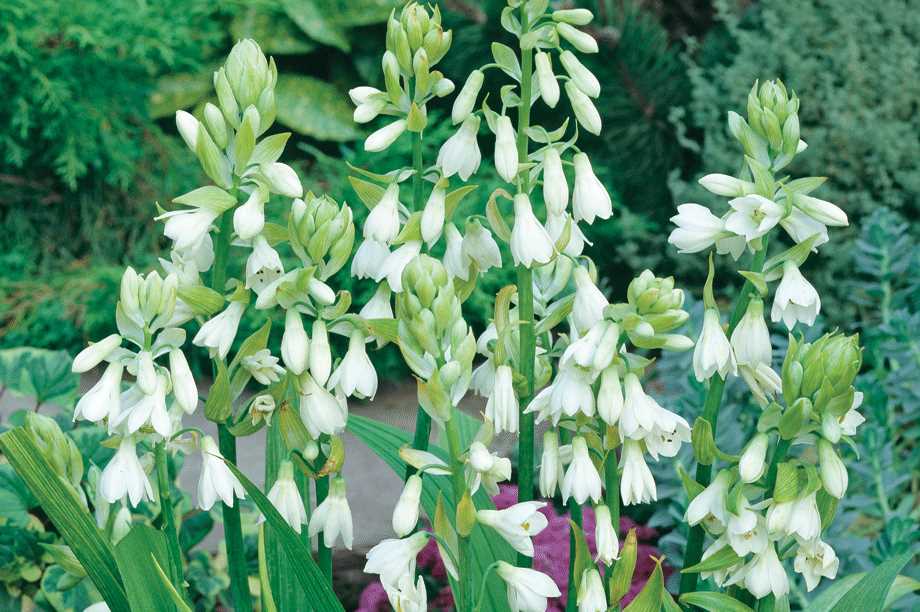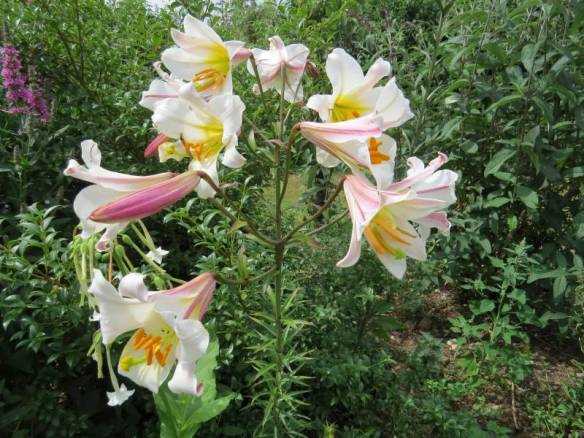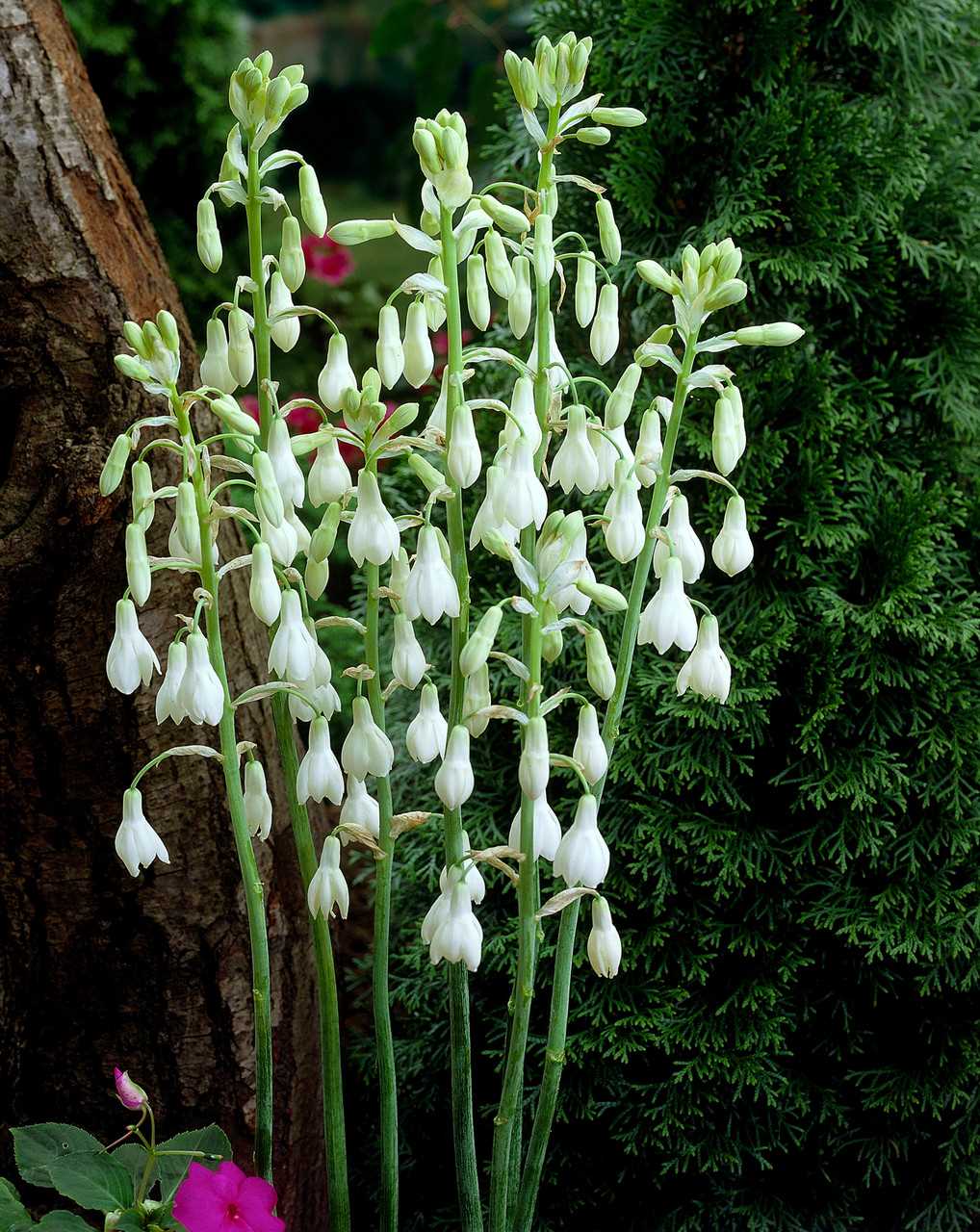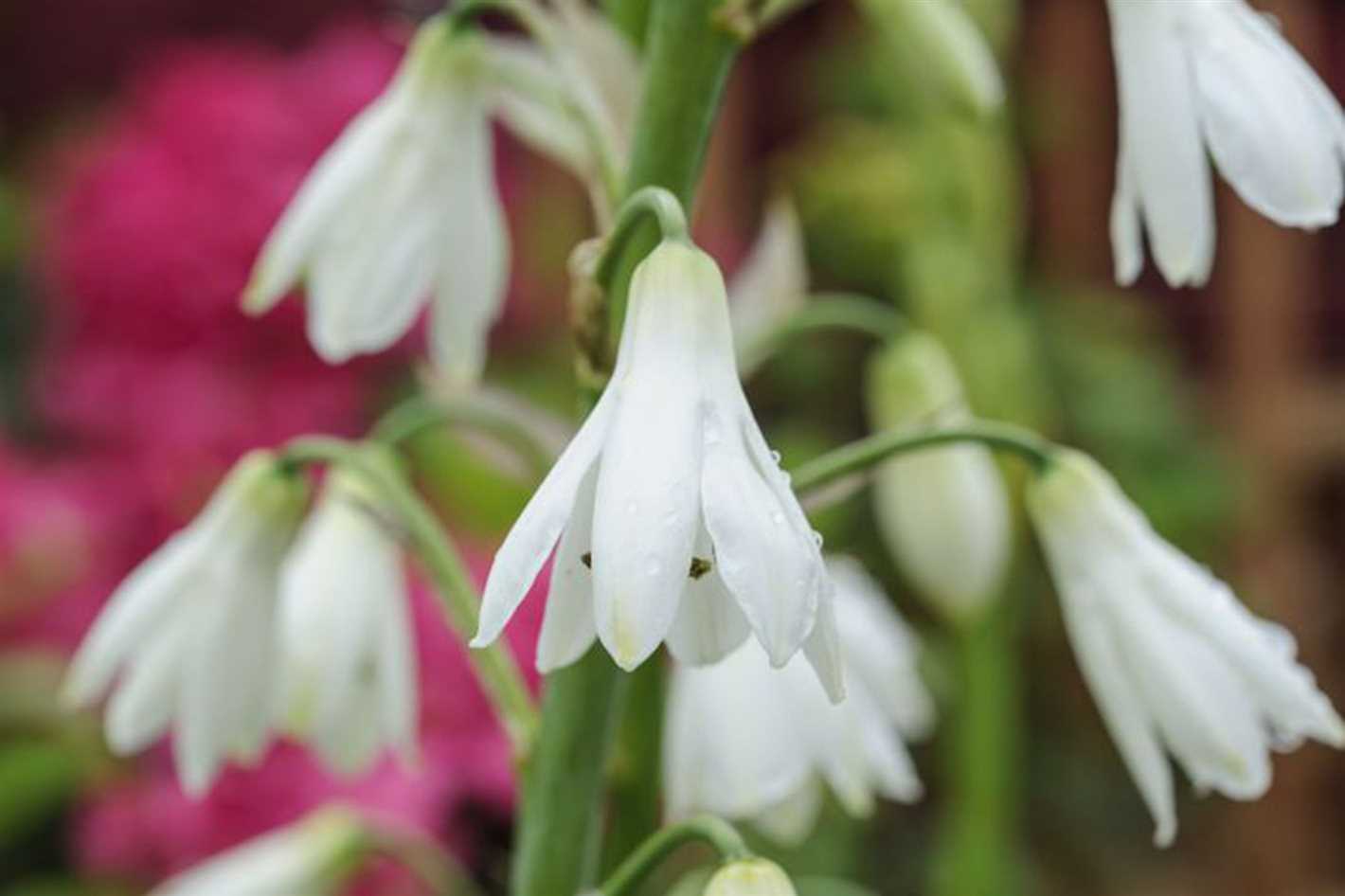- Choosing the Perfect Galtonia for Your Garden
- Varieties to Consider
- Factors to Consider
- Planting and Care Tips
- Tips for Growing Galtonia
- 1. Planting Galtonia Bulbs
- 2. Soil Requirements
- 3. Watering and Fertilizing
- 4. Mulching
- 5. Staking and Support
- 6. Deadheading and Pruning
- 7. Division
- 8. Pests and Diseases
- Common Uses for Galtonia in Landscaping
- 1. Border Planting
- 2. Cottage Gardens
- 3. Rock Gardens
- 4. Cut Flower Arrangements
- 5. Containers
- 6. Pollinator Gardens
- Caring for Galtonia Plants
- Watering:
- Fertilizing:
- Pruning:
- Support:
- Pest and Disease Control:
- Winter Care:
- Propagation of Galtonia
- 1. Division
- 2. Seeds
- Common Pests and Diseases Affecting Galtonia
- Pests
- Diseases
- Questions and Answers:
- How can I grow Galtonia in my garden?
- What types of Galtonia are there?
- When is the best time to plant Galtonia bulbs?
- What are the different varieties of Galtonia?
- Can Galtonia be grown in containers?
- What should I do if my Galtonia plants do not flower?
- Videos: Hyacinth Varieties A to Z
Galtonia, also known as summer hyacinth or Galtonia candicans, is a stunning flowering plant that can add vertical interest and fragrance to any garden. Native to South Africa, Galtonia belongs to the Asparagaceae family and is loved for its tall flower stalks, bell-shaped white flowers, and sweet scent. This article will provide all the information you need to know about growing Galtonia in your garden, including its types and varieties.
Growing Galtonia: Galtonia is a relatively easy plant to grow, making it a popular choice for both experienced and novice gardeners. It prefers well-drained soil and full sun to partial shade. Plant Galtonia bulbs in early spring, with the pointed end facing upwards and about 3-4 inches deep. Space the bulbs about 6-8 inches apart to allow for proper airflow.
The ideal location for Galtonia is one that receives sunlight for at least 6 hours a day, but it can tolerate some shade. Galtonia is a summer-flowering bulb that blooms from mid to late summer with tall spikes of bell-shaped white flowers that can reach heights of up to 4 feet. These elegant flowers are highly fragrant, attracting pollinators such as bees and butterflies to the garden.
Types and Varieties: Galtonia candicans is the most common variety of Galtonia and is known for its large, white flowers and arching flower stalks. However, there are other exciting varieties available for gardeners to explore.
Choosing the Perfect Galtonia for Your Garden
Varieties to Consider
When it comes to choosing the perfect Galtonia for your garden, there are several varieties to consider. Each variety offers its own unique characteristics, so it’s important to choose the one that best fits your gardening preferences.
- Galtonia candicans: This is the most common variety of Galtonia, known for its tall flower spikes and fragrant white blooms. It can reach a height of up to 3 feet and is a favorite among gardeners for its elegant appearance.
- Galtonia regalis: If you’re looking for a Galtonia with a splash of color, this variety is for you. It produces stunning purple flowers that add a pop of vibrancy to any garden. It grows slightly shorter than Galtonia candicans, reaching a height of around 2 feet.
- Galtonia viridiflora: For a truly unique look, consider Galtonia viridiflora. This variety is known for its green flowers, which are a rare sight in the garden. It can reach a height of up to 3 feet and is sure to be a conversation starter.
Factors to Consider
Aside from the variety, there are several factors to consider when choosing the perfect Galtonia for your garden.
- Climate: Galtonia prefers mild climates and thrives in USDA hardiness zones 7-9. If you live in a colder region, you may need to provide some extra protection during the winter months.
- Soil: Galtonia prefers well-drained soil with a pH range of 6.0-7.0. Make sure to prepare your soil properly before planting to ensure optimal growth and blooming.
- Sunlight: Galtonia requires full sun to partial shade to thrive. Make sure to choose a location in your garden that receives at least 6 hours of sunlight per day.
- Watering: While Galtonia is drought-tolerant, it performs best with regular watering. Make sure to water deeply, but allow the soil to dry out slightly between waterings to prevent overwatering.
Planting and Care Tips
Here are some planting and care tips to help your Galtonia thrive in your garden:
- Plant Galtonia bulbs in the fall, about 6-8 weeks before the first frost date in your area.
- Choose a well-drained location with full sun to partial shade.
- Dig a hole that is 2-3 times the depth of the bulb and place the bulb in the hole with the pointed end facing up.
- Backfill the hole with soil and water thoroughly.
- Water the bulbs regularly, especially during dry periods.
- Remove any weeds or competing plants around the Galtonia to allow for optimal growth.
- After blooming, allow the foliage to die back naturally before cutting it back.
- Divide the bulbs every 3-4 years to prevent overcrowding and promote healthier growth.
| Variety | Height | Color |
|---|---|---|
| Galtonia candicans | Up to 3 feet | White |
| Galtonia regalis | Around 2 feet | Purple |
| Galtonia viridiflora | Up to 3 feet | Green |
Tips for Growing Galtonia
1. Planting Galtonia Bulbs

Choose a well-draining location in your garden with full sun to partial shade for planting Galtonia bulbs. Dig a hole that is two to three times deeper than the height of the bulb and place the bulb with the pointed end facing up. Space the bulbs at least 8 inches apart to allow for proper growth.
2. Soil Requirements
Galtonia thrives in well-draining soil that is rich in organic matter. If your soil is heavy and clayey, you can improve its drainage by adding compost or sand. The pH level should be slightly acidic to neutral, ideally between 6 and 7.
3. Watering and Fertilizing
Water Galtonia regularly, especially during dry periods. The soil should be moist but not waterlogged. Avoid overwatering as it can lead to bulb rot. Fertilize with a balanced, slow-release fertilizer in early spring to provide the necessary nutrients for healthy growth.
4. Mulching
Apply a layer of organic mulch around the base of the plants to help retain moisture, suppress weeds, and protect the bulbs during winter. Use materials like wood chips, straw, or compost and ensure a thickness of 2-3 inches.
5. Staking and Support
Galtonia can grow quite tall and may require support to prevent them from bending or falling over. Install stakes or use a plant support system, such as a ring or cage, to keep the stems upright and prevent breakage.
6. Deadheading and Pruning
Remove the faded flowers (deadheading) to encourage continuous blooming and prevent the plant from using its energy to produce seeds. After the blooming season, cut back the stems to the ground. This will help maintain the plant’s appearance and promote healthier growth in the following year.
7. Division
Galtonia bulbs can become overcrowded over time, leading to reduced flowering and vigor. To rejuvenate the plants, divide and replant the bulbs every few years in early spring or late summer. Dig up the bulbs, separate the offsets, and replant them in a well-prepared soil bed.
8. Pests and Diseases
Galtonia is generally resistant to most pests and diseases. However, keep an eye out for aphids, slugs, and snails, and take appropriate measures if you notice significant damage. Good garden hygiene and regular inspections can help prevent and control infestations.
Following these tips will help you grow healthy and beautiful Galtonia flowers in your garden. Enjoy their elegant blooms and their pleasant fragrance!
Common Uses for Galtonia in Landscaping
Galtonia, also known as summer hyacinth or African lily, is a beautiful flowering plant that can be used in various ways to enhance the aesthetics of your garden. Here are some common uses for Galtonia in landscaping:
1. Border Planting
Galtonia can be used to create a stunning border in your garden. Its tall flower spikes, reaching up to 3 to 4 feet in height, add vertical interest and create a dramatic effect. Plant them in a row along a pathway or along the edge of a flower bed to create a beautiful border.
2. Cottage Gardens
The graceful and elegant flowers of Galtonia perfectly complement the informal and romantic feel of cottage gardens. Plant them amongst other cottage garden favorites, such as delphiniums, roses, and lavender, to create a charming and nostalgic atmosphere.
3. Rock Gardens
Galtonia is well-suited for rock gardens due to its ability to tolerate dry and sandy conditions. Its long flowering spikes can add vertical interest to an otherwise low-growing rock garden, creating a visually pleasing contrast.
4. Cut Flower Arrangements

The flowers of Galtonia make great additions to cut flower arrangements. Their pure white color and pleasing fragrance can add a touch of elegance and sophistication to any bouquet. Cut the stems when a few of the lower flowers are just starting to open for the longest vase life.
5. Containers
Galtonia can also be grown in containers, making it a versatile plant for small spaces or balconies. Choose a deep container to accommodate the long roots, and make sure it has good drainage. Combine Galtonia with other summer-blooming plants like begonias or verbenas for a striking display.
6. Pollinator Gardens
The flowers of Galtonia are attractive to bees and butterflies, making it a great addition to pollinator gardens. By planting Galtonia, you can help support pollinators and promote biodiversity in your garden.
With its tall, graceful flowers and pleasant fragrance, Galtonia can be a valuable addition to any landscape. Whether used as a border plant, in cottage and rock gardens, or in containers and cut flower arrangements, Galtonia is sure to make a statement and bring beauty to your outdoor space.
Caring for Galtonia Plants
Watering:
Galtonia plants require regular watering to keep the soil consistently moist. However, it’s important not to overwater them, as excessive moisture can lead to root rot. During the growing season, water the plants deeply once or twice a week, allowing the soil to dry out slightly between waterings. Reduce watering in the dormant season.
Fertilizing:
Provide Galtonia plants with a balanced fertilizer once a month during the growing season. Choose a fertilizer specifically formulated for flowering plants and follow the instructions on the packaging for the correct dosage.
Pruning:
Deadhead the faded flowers regularly to encourage the growth of new blooms. This will also prevent the plant from diverting energy into producing seeds. Cut the flower stem back to the base of the plant using clean and sharp pruners.
Support:

Galtonia plants can become tall and may require support to prevent them from bending or flopping over. Place stakes or a plant support hoop around the plant early in the growing season to provide support as needed.
Pest and Disease Control:
Keep an eye out for common pests such as aphids and slugs. If you notice any signs of infestation, treat the plants with an appropriate insecticide or take necessary measures to get rid of the pests. Additionally, ensure good air circulation around the plants to prevent fungal diseases.
Winter Care:
In colder climates, Galtonia plants may need some protection during winter. Apply a layer of mulch around the plants’ base to insulate the soil and protect the bulbs from freezing temperatures. If winter temperatures consistently drop below freezing, consider lifting the bulbs and storing them in a cool and dry place until spring.
Propagation of Galtonia
To propagate Galtonia, you have a few options. Here are two common methods:
1. Division
The easiest and most common way to propagate Galtonia is through division. This method involves digging up the mature bulbs in late summer or early autumn, when the foliage has died back. Carefully separate the bulbs, making sure each division has its own roots attached. Replant the divisions immediately, spacing them apart in well-draining soil. Water thoroughly after planting.
2. Seeds
Another method of propagation is from seeds. Collect the seeds from the flowers once they have ripened. Sow the seeds in trays or pots filled with a well-draining potting mix. Keep the soil consistently moist and place the trays in a warm, sunny location. Germination can take anywhere from a few weeks to several months. Once the seedlings are large enough to handle, transplant them into individual pots or to a prepared garden bed.
Note: Galtonia grown from seeds may take several years to mature and begin flowering.
Regardless of the method you choose, it’s important to provide Galtonia with the right conditions to thrive. They prefer full sun to partial shade and well-draining soil. Water regularly during the growing season, but avoid overwatering as this can lead to root rot. With proper care, your Galtonia plants will reward you with beautiful spires of fragrant flowers year after year!
Common Pests and Diseases Affecting Galtonia
Pests
- Aphids: These small insects feed on the sap of Galtonia plants, causing stunted growth and distorted leaves. Regularly inspect the plants and use insecticidal soap or neem oil to control aphid populations.
- Slugs and snails: These pests are attracted to Galtonia foliage and flowers, leaving behind slime trails and causing damage. Apply organic slug and snail bait or create barriers around the plants to protect them.
- Thrips: Thrips are tiny insects that feed on Galtonia leaves, causing silver or brown streaks and distorted growth. Use insecticidal soap or neem oil to control thrips infestations.
Diseases

- Botrytis blight: This fungal disease causes brown spots and rotting on Galtonia flowers and foliage. Remove infected plant parts and improve air circulation to prevent the disease.
- Leaf spot: Leaf spot is a fungal disease that causes brown spots on Galtonia leaves. Remove infected leaves and avoid overhead watering to prevent the spread of the disease.
- Root rot: Root rot is often caused by overwatering or poorly drained soil, leading to the roots rotting. Avoid overwatering and ensure the plant is grown in well-drained soil to prevent root rot.
Questions and Answers:
How can I grow Galtonia in my garden?
You can grow Galtonia in your garden by planting the bulbs in well-drained soil in a sunny or partially shaded location. Plant the bulbs in the spring or fall, and water them regularly. Galtonia does well in USDA hardiness zones 7-10.
What types of Galtonia are there?
There are several types of Galtonia, including Galtonia candicans, Galtonia princeps, and Galtonia regalis. Each type has its own unique characteristics and flower shape.
When is the best time to plant Galtonia bulbs?
The best time to plant Galtonia bulbs is in the spring or fall. Planting in the spring allows the bulbs to establish themselves before blooming in the summer, while planting in the fall allows for a longer period of root establishment before winter.
What are the different varieties of Galtonia?
There are several different varieties of Galtonia, including Galtonia candicans ‘White Triumph’, Galtonia princeps ‘Mixed’, and Galtonia regalis ‘Spire’. Each variety has its own unique color and size of flowers.
Can Galtonia be grown in containers?
Yes, Galtonia can be grown in containers as long as the containers are large enough to accommodate the bulbs and provide proper drainage. Use a well-draining potting mix and place the containers in a sunny location.
What should I do if my Galtonia plants do not flower?
If your Galtonia plants do not flower, it could be due to a few reasons. Ensure that they are planted in a location with enough sunlight, and that they are receiving adequate water and nutrients. It may also take a year or two for the bulbs to establish themselves before blooming.







